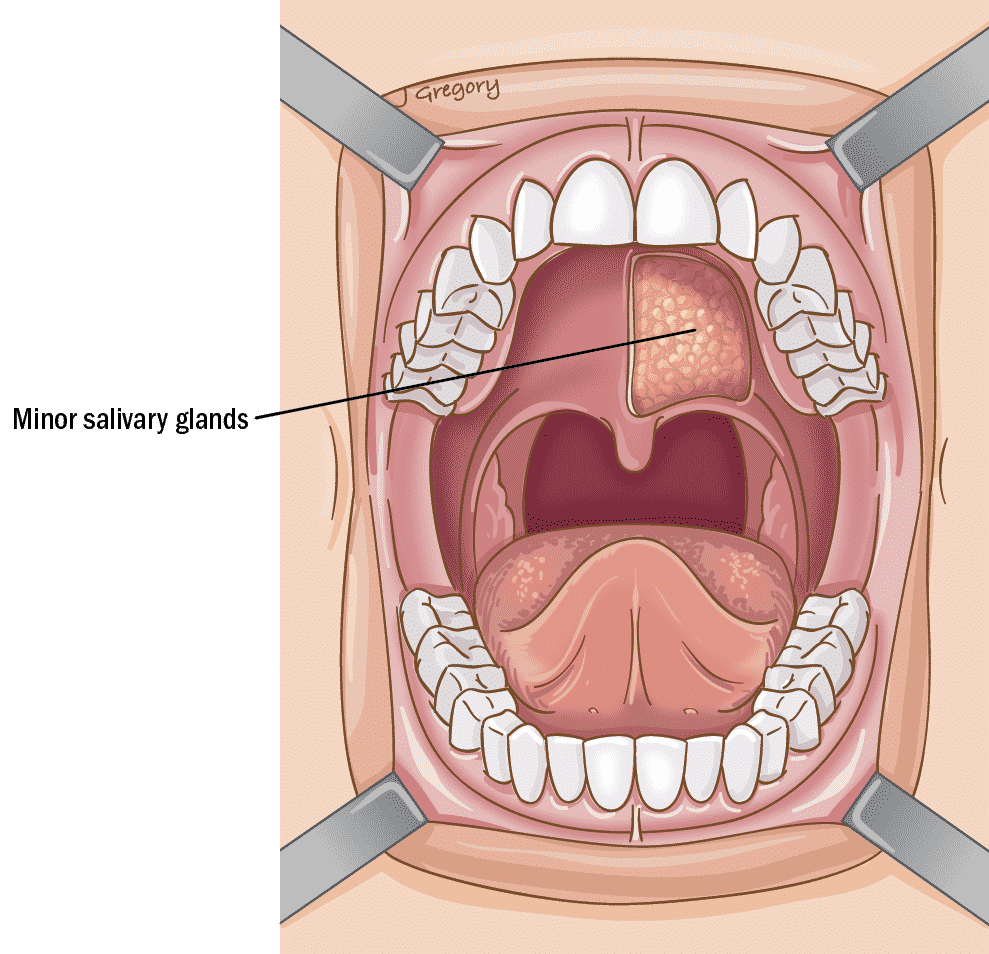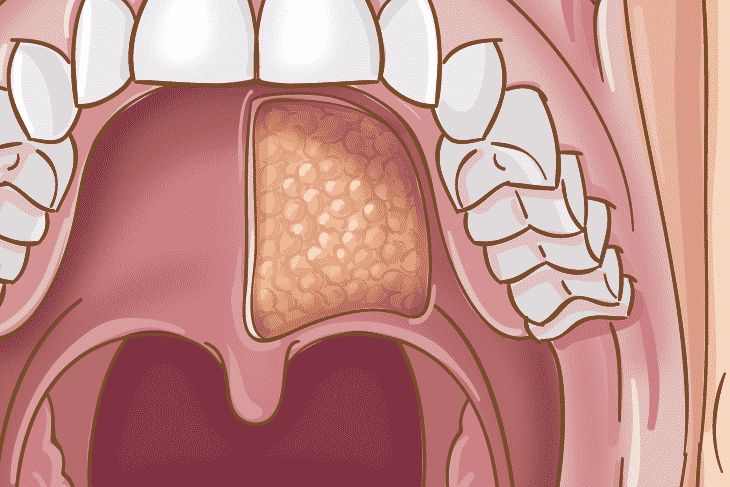What & Where are the Salivary Glands?
The salivary glands are located in various places in the mouth and the back of the throat. The salivary glands are responsible for producing the saliva that helps chew and digest food. Oral salivary cancers typically start out as a lump or bump in the mouth or the cheek or painful ulcers. If a patient feels a growth in these areas, it is a good idea to see a doctor to get it checked out.
A biopsy may be necessary to determine if the growth is a cancer, and further evaluation with an MRI or a CT scan may be required. The treatment for oral salivary cancers is usually surgery, sometimes followed by radiation treatment and occasionally chemotherapy.
Salivary Region Anatomy
In order to begin to understand oral salivary gland cancer, it helps to understand the location, function, and anatomy of the salivary glands. In the head and neck, there are two main categories of salivary glands: major salivary glands (parotid, submandibular, and sublingual glands) and minor salivary glands.
There are thousands of minor salivary glands in the mouth and throat, but there is a high concentration of them that are located at the junction of the hard and soft palate on the roof of the mouth, near the lips, and along the lining inside the cheeks. There are also minor salivary glands in the tongue, and down into the throat.

Causes, Signs & Symptoms
Rarely, oral salivary gland cancer may first manifest as a neck lump, indicating spread to lymph nodes. Typically, the primary cancer in the mouth is detected before reaching lymph nodes. It’s crucial to recognize that having these symptoms doesn’t necessarily mean oral salivary gland cancer, as non-cancerous causes exist. Seeking advice from a specialist is essential for proper medical evaluation.
Common Causes of Salivary Gland Cancer
- Exposure to radiation.
- Viral infection (HIV-1, specific types of HPV [types 16 and 18], polyomavirus, and Epstein-Barr virus).
Common Symptoms
- A lump or bump in the mouth.
- Painful sores or ulcers in the mouth.
- Numbness (i.e. in the lower teeth or lower lip/chin area).
- Recurrent bleeding from the mouth.
- Loose teeth or dentures that don’t fit correctly.
- Difficulty opening the mouth (trismus)
- Pain or difficulty with swallowing.
Diagnosis
The diagnosis phase can be difficult and overwhelming. During this phase, further testing will be necessary to confirm a diagnosis and determine the best course of treatment. Patients can expect their doctor to have a discussion with them about the risks, benefits, and alternatives to having a physical examination, a biopsy and having imaging scans performed.
Type, Grade & Stage
After diagnosing a patient with salivary cancer, a doctor will need to determine what type of cancer it is, the grade of the tumor (i.e. the risk level), and the stage of the cancer based on a biopsy or pathology after surgery.
It is important to note that oral cancers can be difficult to diagnose. If a doctor is having a hard time determining what type of cancer it is, they might ask for a second opinion and send some pieces of the tumor off to a specialist in head and neck pathology who deals more frequently with these types of tumors.
Treatment Plan
After determining a diagnosis and completing a full pre-treatment evaluation, doctors will recommend a course of treatment for their patients.
In general, there are three different options for the treatment of buccal cancer that can be used alone or in combination: surgery, radiation and chemotherapy.
Prognosis
A prognosis is a prediction of the outcome of one’s disease. How likely is survival? Will the cancer come back? These are the big questions on most people’s minds after receiving a diagnosis of oral salivary cancer.
In general, there are 6 tumor characteristics that can inform a patient about their chances of being cured: the stage, the site, the type & grade, the spread to lymph nodes, the tumor margins and the spread into local structures.
What to Expect After Treatment
After treatment, patients should follow-up with their doctors on a regular basis.
Patients should visit their head and neck specialist on a regular schedule (or earlier if they have any concerning symptoms). This allows doctors to monitor the patient for any sign that the cancer has returned. The best timeline for follow-up will be determined by the doctor.












